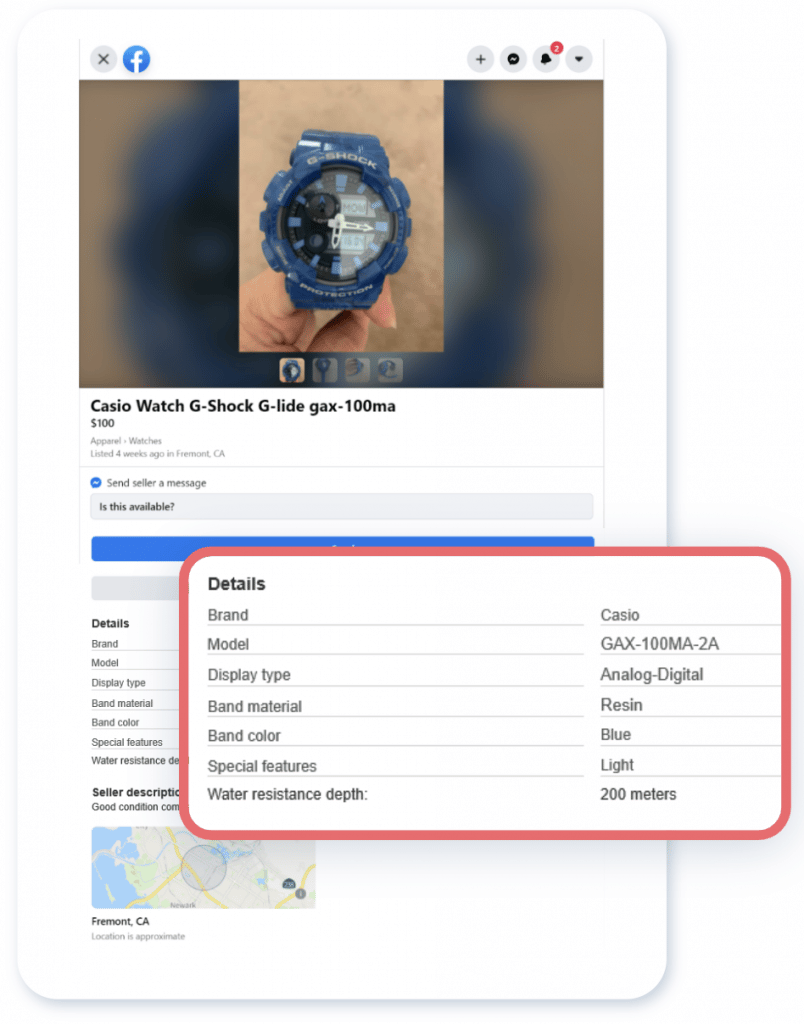Catalog Enhancement
Trust and Enhance Your Product Data Content
Marketplaces know that A+ content is a significant revenue driver. Most often this data comes from sellers, and therefore, it is critical that they input complete and accurate product data. If the data is poor, shoppers can not easily identify what they’re looking for, become confused, and head over to competitor sites. When marketplaces can guarantee their product data catalogs are accurate they can:
- Increase revenue
- Keep customers from going to competitive sites with stronger catalog content that enables them to make more informed purchasing decisions
- Get the right item listing in front of the right shoppers at the right time
In fact, 46% of shoppers in the US will not buy a product if they don’t find the detailed information they are looking for online, according to Salsify.

Industry Type

Marketplaces
Complete solution from catalog integrity and assortment to seller onboarding and more
Why Clusterfor Catalog Enhancement?
Comprehensive Catalog
The Cluster product data catalog is the industry’s most comprehensive at 2 billion items and growing, enabling customers to efficiently enhance their own complete and accurate product data content.


Improved Shopper Experience
With a robust catalog, consolidating duplicate items into one listing can improve the buying experience by reducing the amount of clicks to get to a purchase.
Seller Onboarding
Because of the breadth and depth of Cluster’s catalog, sellers can easily and quickly onboard to marketplaces with an autofill option.


GTIN Coverage
Through a partnership with GS1, Cluster is able to identify and validate GTINs, as well as assign recommended GTINs based on a probability score, by using keywords or product descriptions.
Structured and Unstructured Data
Cluster can identify products from both structured and unstructured data so customers can enhance their product listings with more attributes and robust data.

Best Practices for Catalog Enhancement
- Product identification is the most common type of eCommerce content. When customers know what they’re buying, they're more apt to complete their purchases. And that means better conversion rates.
- A good eCommerce marketplace connects prospective buyers with the products or services they need as quickly as possible. The key to this is accurate and trusted product data so shoppers can precisely identify the products that are available.
- Each product should have a unique identifier that can accurately be shared across channels.
- Create an effortless seller onboarding process and reduce the entrance of poor product data by taking the burden of listing items off of sellers. By leveraging the most comprehensive data catalog, marketplaces can own the listing process and even remove the GTIN requirement that oftentimes leads sellers to abandonment during the onboarding process.
Technical Overview
Product Matching API
to identify product data across channels

Product Details API
to run identifiers (GTIN, ASIN, etc.)

Product Analysis API
to identify products across channels in real time
FAQs
Cluster has the most comprehensive product data catalog in the market, tracking eCommerce sales of over 50,000+ categories across Amazon, Walmart and eBay in real time. This accounts for over 80% of business that is conducted online today. We also have the largest structured SKU-level dataset available with over 1B items with full product level attributes (SKU, UPC, EAN, ASIN, GTIN, Color, Dimensions, etc.). That being said, if a product does not contain a GTIN, Cluster also has the ability to lookup products by keywords to identify and even recommend a GTIN for an item.
As more and more products enter marketplaces consistently; the accompanying product data can get messy. By auto-filling that product data from a large, structured catalog, marketplaces can take that burden of listing items off sellers to avoid inputting bad data now and going forward.
Yes, products with unique GTINs for example have a 40% higher click through rate and 20% higher sales, according to Google. Those products also become more searchable in Google and shoppers are less likely to abandon a site out of frustration for not finding what they need. In short, it helps serve the right product to the right customer at the right time.
